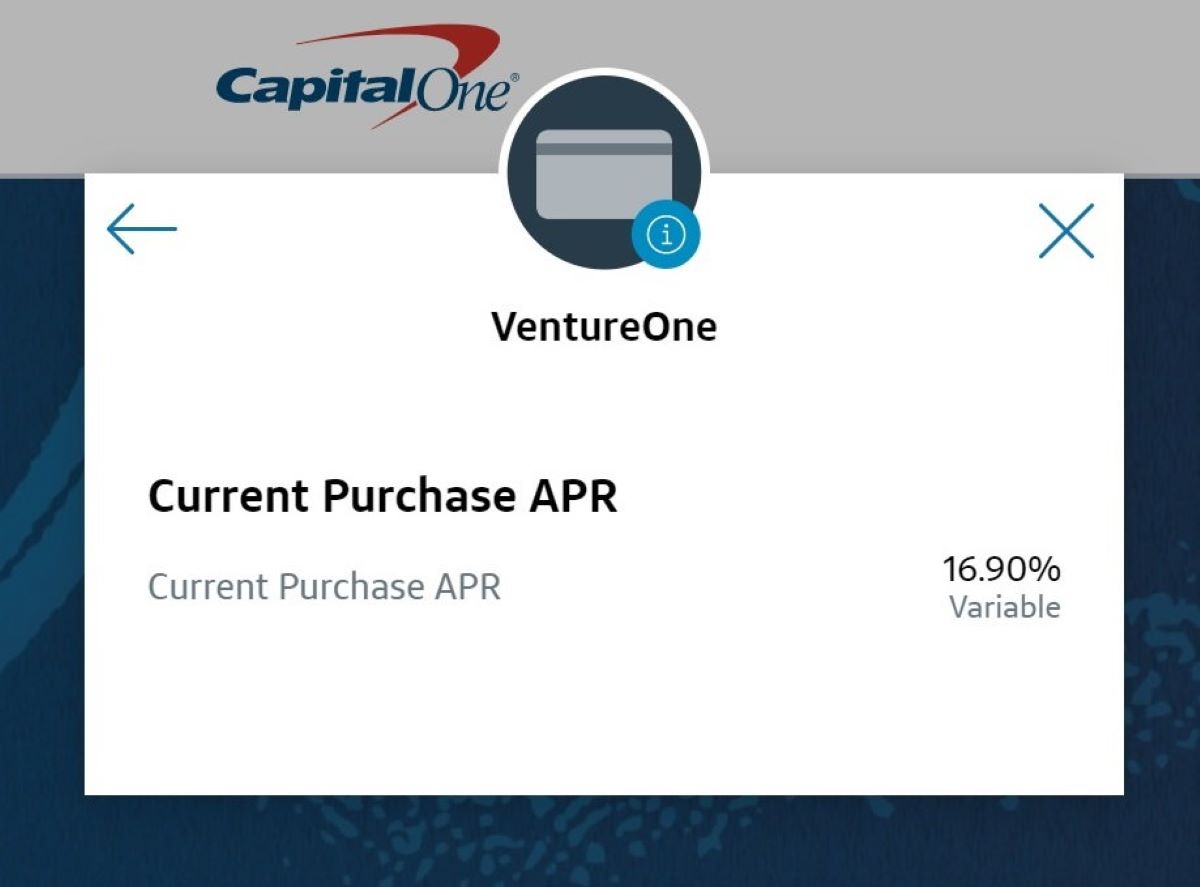

Finance
What Is Statement Balance At Capital One
Published: March 2, 2024
Learn about the statement balance at Capital One and how it impacts your finances. Understand the importance of managing your credit card balance effectively.
(Many of the links in this article redirect to a specific reviewed product. Your purchase of these products through affiliate links helps to generate commission for LiveWell, at no extra cost. Learn more)
Table of Contents
Introduction
Welcome to the world of personal finance, where understanding your credit card statement balance is crucial for financial well-being. In this article, we will delve into the concept of statement balance, particularly in the context of Capital One credit cards. Whether you're a seasoned credit card user or just starting on your financial journey, comprehending the ins and outs of your statement balance at Capital One is essential for making informed decisions and maintaining a healthy financial profile.
Credit cards have become an integral part of modern-day financial transactions, offering convenience and flexibility. However, they also come with the responsibility of managing balances and payments effectively. Capital One, a prominent player in the credit card industry, provides its customers with detailed monthly statements that include vital information about their financial activities. Understanding the statement balance on a Capital One credit card empowers cardholders to take control of their finances and make informed decisions regarding payments and budgeting.
In the following sections, we will explore the significance of the statement balance, its impact on credit utilization, and strategies for effectively managing it. Whether you're aiming to improve your credit score, minimize interest charges, or simply stay on top of your financial obligations, grasping the nuances of your statement balance at Capital One is a fundamental step toward financial empowerment. So, let's embark on this enlightening journey into the realm of statement balances and discover the valuable insights that will empower you to navigate the world of credit with confidence and knowledge.
Understanding Statement Balance
Before delving into the specifics of managing your statement balance with Capital One, it’s essential to grasp the concept of statement balance itself. Your statement balance represents the total amount you owe to the credit card company at the end of a billing cycle. This balance is a comprehensive snapshot of your recent credit card activity, including purchases, cash advances, balance transfers, and any applicable fees or interest charges.
When you receive your monthly credit card statement from Capital One, the statement balance is prominently featured, indicating the amount that is due by the payment due date to avoid incurring interest charges. It’s important to differentiate the statement balance from the current balance, which reflects the real-time amount owed on the credit card, considering any recent transactions or payments that may not yet be included in the statement balance.
Furthermore, understanding the components that contribute to your statement balance is crucial. It encompasses not only your credit card purchases but also factors such as finance charges, annual fees, and any other applicable costs. By comprehending the composition of your statement balance, you can gain insights into your spending patterns, identify areas for potential cost savings, and make informed decisions regarding your financial management.
Moreover, the statement balance plays a pivotal role in determining your credit utilization ratio, a key factor in credit scoring models. Your credit utilization ratio is the proportion of your credit card balances to your credit limits, and a lower ratio generally indicates responsible credit management. By maintaining a low statement balance relative to your credit limit, you can positively impact your credit score, potentially unlocking better borrowing terms and financial opportunities in the future.
As we navigate the intricacies of statement balances, it becomes evident that a comprehensive understanding of this fundamental financial metric is essential for making sound financial decisions and optimizing your overall credit card management strategy.
Importance of Statement Balance at Capital One
The statement balance on your Capital One credit card holds significant importance in your financial journey, influencing various aspects of your credit management and overall financial well-being. Understanding the specific significance of the statement balance at Capital One is crucial for maximizing the benefits of your credit card usage and maintaining a healthy financial profile.
First and foremost, the statement balance serves as a pivotal indicator of your financial responsibility and creditworthiness. By consistently managing and paying off your statement balance in full and on time, you demonstrate reliability and fiscal prudence to credit reporting agencies. This, in turn, can positively impact your credit score, potentially opening doors to better borrowing terms, lower interest rates, and enhanced financial opportunities.
Furthermore, your statement balance directly influences your credit utilization ratio, a critical factor in credit scoring models. Maintaining a low statement balance relative to your credit limit can lead to a lower credit utilization ratio, signaling responsible credit usage and positively impacting your credit score. Capital One, like other credit card issuers, considers this ratio when assessing your creditworthiness, making it essential to manage your statement balance effectively for long-term financial benefits.
Another key aspect of the statement balance’s importance at Capital One lies in its role in interest calculations. When you carry a balance from month to month, the statement balance directly affects the amount of interest accrued on the outstanding balance. By staying vigilant about managing and paying off your statement balance, you can minimize interest charges, potentially saving money and optimizing your financial resources.
Moreover, understanding the importance of your statement balance at Capital One empowers you to make informed decisions regarding your financial commitments and budgeting strategies. By monitoring and managing your statement balance effectively, you can maintain control over your credit card usage, avoid unnecessary fees, and work toward achieving your financial goals with confidence and clarity.
In essence, recognizing the significance of the statement balance at Capital One is instrumental in harnessing the full potential of your credit card, optimizing your credit management practices, and laying a solid foundation for a secure financial future.
How to Manage Statement Balance
Effectively managing your statement balance with Capital One involves proactive financial strategies and prudent decision-making to maintain a healthy credit profile and optimize your overall financial well-being. By implementing the following practices, you can navigate the realm of statement balances with confidence and precision.
- Regular Monitoring: Stay vigilant about monitoring your credit card activity and statement balances. Utilize Capital One’s online banking tools or mobile app to track your transactions, review your statement balances, and identify any discrepancies or unauthorized charges promptly.
- Budgeting and Planning: Incorporate your credit card statement balance into your overall budgeting and financial planning. By allocating funds to cover the statement balance each month, you can ensure timely and complete payments, avoiding interest charges and demonstrating financial responsibility.
- Timely Payments: Adhere to the payment due dates specified on your Capital One credit card statements. Making timely payments on your statement balance is crucial for avoiding late fees and interest charges, as well as maintaining a positive credit history and credit score.
- Payment Strategies: Consider paying more than the minimum required amount on your statement balance whenever possible. By paying off a larger portion of the balance, you can reduce interest charges and expedite your journey toward debt-free credit card usage.
- Utilization Management: Be mindful of your credit utilization ratio by keeping your statement balance well below your credit limit. This practice can positively impact your credit score and enhance your creditworthiness in the eyes of potential lenders and financial institutions.
- Communication with Capital One: In cases of financial hardship or unexpected circumstances, don’t hesitate to communicate with Capital One. They may offer assistance or alternative payment arrangements to help you manage your statement balance effectively and navigate challenging financial situations.
By integrating these proactive approaches into your financial management routine, you can effectively manage your statement balance with Capital One, optimizing your credit card usage and positioning yourself for long-term financial success.
Conclusion
As we conclude our exploration of the statement balance at Capital One, it’s evident that this fundamental financial metric holds substantial influence over your credit management practices and overall financial well-being. By gaining a comprehensive understanding of your statement balance and implementing proactive strategies to manage it effectively, you can harness the full potential of your Capital One credit card while positioning yourself for long-term financial success.
Recognizing the significance of your statement balance goes beyond mere financial awareness; it empowers you to make informed decisions, optimize your credit utilization, and demonstrate fiscal responsibility to credit reporting agencies and potential lenders. By consistently managing and paying off your statement balance, you can positively impact your credit score, potentially unlocking better borrowing terms and financial opportunities in the future.
Furthermore, understanding the nuances of your statement balance at Capital One enables you to navigate the complexities of credit card usage with confidence and clarity. By monitoring your statement balances, adhering to payment due dates, and implementing prudent financial planning, you can minimize interest charges, avoid unnecessary fees, and maintain control over your financial commitments.
Ultimately, the journey toward effectively managing your statement balance with Capital One is a testament to your commitment to financial empowerment and responsible credit usage. By integrating proactive financial practices, such as budgeting, timely payments, and strategic credit utilization management, you can pave the way for a secure financial future and unlock the full potential of your Capital One credit card.
As you continue on your financial journey, remember that your statement balance is not just a number on a monthly statement; it’s a reflection of your financial habits, discipline, and aspirations. By embracing the importance of your statement balance and implementing sound financial strategies, you can embark on a path toward sustained financial well-being and make the most of your credit card experience with Capital One.














